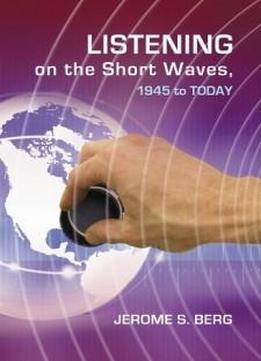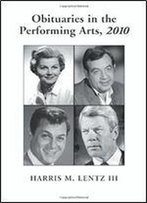
Listening On The Short Waves, 1945 To Today
by Jerome S. Berg /
2008 / English / PDF
12.6 MB Download
The discovery and development of shortwave technology during the 1920s and 1930s permitted radio stations throughout the world to transmit their programs over long distances, even worldwide, for the first time, and the thrill of hearing broadcasts from faraway places produced a dedicated American audience. Developments in shortwave broadcasting and shortwave listening from their inception through the war years were covered in
The discovery and development of shortwave technology during the 1920s and 1930s permitted radio stations throughout the world to transmit their programs over long distances, even worldwide, for the first time, and the thrill of hearing broadcasts from faraway places produced a dedicated American audience. Developments in shortwave broadcasting and shortwave listening from their inception through the war years were covered inOn the Short Waves, 1923-1945: Broadcast Listening in the Pioneer Days of Radio
On the Short Waves, 1923-1945: Broadcast Listening in the Pioneer Days of Radio, published by McFarland in 1999. This book picks up the story in 1945, describing the resumption of organized shortwave listening after the war and its development in the years since. The companion volume,
, published by McFarland in 1999. This book picks up the story in 1945, describing the resumption of organized shortwave listening after the war and its development in the years since. The companion volume,Broadcasting on the Short Waves, 1945 to Today
Broadcasting on the Short Waves, 1945 to Today, focuses on the world's shortwave stations.
, focuses on the world's shortwave stations. Written from the standpoint of the serious shortwave enthusiast, this book begins with an examination of the broader shortwave listening audience. It then presents in detail the histories of the major North American shortwave clubs and reviews the professional and listener-generated shortwave literature of the era. It also covers the DX programs and other listening fare to which shortwave listeners were most attracted and the QSL-cards they sought as confirmation of their reception. The book presents a chronology of the shortwave receivers available and discusses how changes in receiver technology impacted the listening experience. It also addresses the important role that computers have played in the shortwave listening of recent decades. The book is richly illustrated and indexed, and features extensive notes to facilitate further reading or research.
Written from the standpoint of the serious shortwave enthusiast, this book begins with an examination of the broader shortwave listening audience. It then presents in detail the histories of the major North American shortwave clubs and reviews the professional and listener-generated shortwave literature of the era. It also covers the DX programs and other listening fare to which shortwave listeners were most attracted and the QSL-cards they sought as confirmation of their reception. The book presents a chronology of the shortwave receivers available and discusses how changes in receiver technology impacted the listening experience. It also addresses the important role that computers have played in the shortwave listening of recent decades. The book is richly illustrated and indexed, and features extensive notes to facilitate further reading or research.











